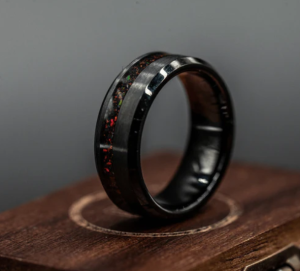When the first internet-connected devices emerged in the late 1990s, few could predict the tidal wave of change that would follow. Today, the Internet of Things (IoT) – a vast ecosystem of smart devices, sensors, and systems – touches nearly every aspect of our daily lives. From the smart thermostat regulating your home temperature to automated factories optimizing production lines in real time, IoT has evolved from a futuristic buzzword to a practical force driving business innovation and personal convenience.
But IoT’s progress isn’t simply about more gadgets. It’s about a transformative digital infrastructure that makes real-time data actionable, enabling better decision-making across industries. As this network expands, it continues to blur the boundaries between the digital and physical worlds, connecting not just devices, but experiences, creativity, and communities – sometimes in unexpected places like https://frowningfrancisfolkart.com/, where technology and artistry uniquely meet.
What Is the Internet of Things?
At its core, IoT refers to a system where physical objects (“things”) are embedded with sensors, software, and connectivity so they can collect and exchange data with other devices and systems over the internet.
These things can be:
- Smart home devices (thermostats, lights, locks)
- Wearables (fitness trackers, smartwatches)
- Industrial sensors (temperature controls, machine monitors)
- Vehicles (connected cars, fleet management systems)
- Environmental sensors (air quality, weather stations)
The “smart” part comes from the device’s ability to process and relay data in real time, often leading to automatic adjustments or notifications without human intervention.
How IoT Works: Components and Connectivity
To understand IoT, it’s useful to break it down:
| Component | Role in IoT System |
| Devices/Sensors | Collect data from the environment |
| Connectivity | Send/Receive data via Wi-Fi, 5G, Bluetooth |
| Data Processing | Analyze incoming data, often in the cloud |
| User Interface | Present actionable insights to humans/devices |
For example, a smart irrigation system uses moisture sensors and weather data to automatically water plants only when needed, saving water and money.
Real-World Applications
IoT’s reach extends across multiple industries, improving efficiency, safety, and customer experience.
Smart Homes
Smart thermostats learn your schedule and adjust temperatures for comfort and savings. Security systems let you monitor your property from anywhere, and refrigerators can now remind you when to buy milk.
Healthcare
Wearable devices measure heart rate, physical activity, and sleep patterns, sending data to healthcare providers for better patient monitoring. Hospitals use IoT sensors to track equipment, optimize workflows, and monitor medication storage.
Transportation
Connected vehicles communicate with each other and road infrastructure to reduce accidents and traffic congestion. Fleet managers monitor vehicles in real time for maintenance and logistics.
Industrial Automation
Factories use sensors to predict when a machine needs maintenance, minimizing downtime. Supply chains are more resilient with real-time tracking of goods from warehouse to delivery.
Environmental Monitoring
IoT devices track air quality, water pollution, and crop conditions – helping governments and businesses react quickly to risks and improve sustainability efforts.
Benefits and Challenges
Benefits
- Efficiency: Real-time data enables smarter resource management – less waste, lower costs, better outcomes.
- Convenience: Automated systems simplify daily tasks, from lighting to scheduling maintenance.
- Safety: Proactive monitoring detects issues before they become dangerous.
- Innovation: New business models emerge, fueled by data analytics and connected experiences.
Challenges
- Security Risks: With more devices online, vulnerabilities multiply. Hackers target IoT systems for data theft or disruption.
- Privacy Concerns: Data generated by personal devices can be sensitive and requires strong protections.
- Interoperability: Diverse device standards can complicate integration.
- Scalability: Managing thousands or millions of devices requires robust infrastructure.
Future Trends in IoT
Five key trends are shaping IoT’s next decade:
- Edge Computing: Data processed closer to devices (the “edge”) rather than distant cloud servers, reducing latency and improving speed.
- 5G Networks: Faster, lower-latency connections expand what IoT devices can do, from real-time health monitoring to automated driving.
- AI Integration: Machine learning helps IoT devices predict, adapt, and learn patterns for even greater autonomy.
- Standardization: Industry-wide protocols will make devices easier to connect and secure.
- Sustainable IoT: Energy-efficient devices and applications support greener operations, from agriculture to urban planning.
IoT in Everyday Life: What to Expect
The surge of smart devices means consumers should anticipate:
- More personalized in-home experiences, with AI-enabled assistants anticipating needs.
- Improved medical care and health insights, delivered instantly and remotely.
- Safer, smarter cities with real-time traffic, pollution, and infrastructure monitoring.
- Continuous data-driven improvement in nearly every aspect of consumer products and services.
Conclusion
The Internet of Things is more than just an endless string of gadgets – it’s a fundamental rethinking of how physical and digital worlds interact. Its applications span homes, hospitals, factories, and public infrastructure, promising a future that’s smarter, safer, and more efficient. Yet, with this growth come real responsibilities surrounding privacy, security, and ethical use.
As IoT continues to expand, those who understand and harness its power – whether engineers, business leaders, or creative innovators – will help shape a connected world that works better for everyone. The future of IoT isn’t just technology: it’s the stories, experiences, and impact it brings to life.











